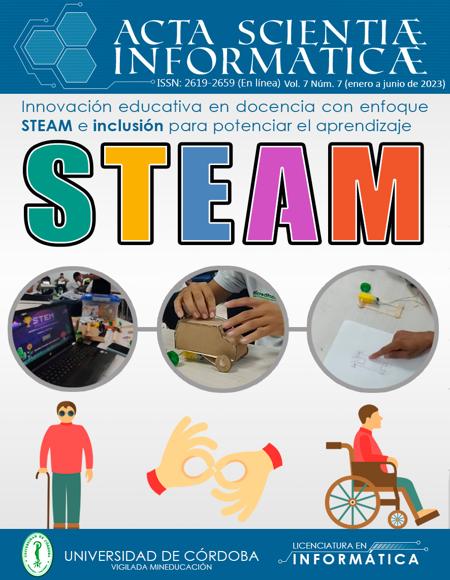4 LA APP “TERAPIA DE CONVERSACIÓN”: UNA ESTRATEGIA DIDÁCTICA PARA LOS PROCESOS COGNITIVOS EN ESCOLARES CON DISFASIA
LA APP “TERAPIA DE CONVERSACIÓN”: UNA ESTRATEGIA DIDÁCTICA PARA LOS PROCESOS COGNITIVOS EN ESCOLARES CON DISFASIA
Show authors biography
This article presents a study aimed at implementing the "Talk Therapy" app as a didactic strategy to strengthen the cognitive processes of students diagnosed with Dysphasia. Understanding dysphasia as a congenital disorder characterized by a late onset in the beginning or production of language, both in its expressive and
comprehensive forms. It is defined by an atypical development of the comprehension or expression of spoken or written language and by problems of language processing and/or abstraction of significant information, for short- and long-term storage, which significantly affects social life and school of the people who present it. The research methodology is qualitative with a
research approach - evaluative action, which was carried out in 3 procedural phases: 1. Diagnosis.2. Design and application of activities.3. Application of the ICT tool. The Results obtained were the identification of the shortcomings and pragmatic problems that students with dysphasia have. In short, it is concluded to show that the implementation of technological tools is of great help to strengthen the cognitive processes of students with disabilities in dysphasia since the usefulness of the conversation therapy instrument manages to capture the student's attention and is a dynamic form of transposition of learning.
Article visits 499 | PDF visits
Downloads
- Valdizán, J. R., Rodríguez Mena, D., & Díaz Sardi, M. (2011). Trastorno del lenguaje expresivo y actividad paroxística focal. Rev. neurol.(Ed. impr.), 135-139
- Belloch, C. (2014). Recursos tecnológicos para la intervención en trastornos del lenguaje oral y escrito.
- Torres Cisneros, M. J., & Villacís Vallejo, O. S. (2016). La disfasia en el proceso de la expresión oral en los niños de inicial 1 del centro de desarrollo infantil municipal no. 6, de la ciudad de Riobamba, provincia de Chimborazo, periodo lectivo 2014-2015 (Bachelor's tesis, Riobamba, NACH
- .
- Narváez Martínez, N. M. (2021). Materiales educativos digitales para fortalecer la enseñanza
- de los estudiantes con discapacidad cognitiva. https://repositorio.unicordoba.edu.co/handle/u
- cordoba/3916
- Carrillo Candelejo, L. E., & Jaime Yépez, J. L. (2020). Intervención temprana sensorial en procesos lingüísticos de prescolares (Doctoral dissertation, Universidad de Guayaquil. Facultad de Ciencias Médicas. Carrera de Tecnología Médica).
- Barros Bastida, C., & Barros Morales, R. (2015). Los medios audiovisuales y su influencia en la
- educación desde alternativas de análisis. Revista Universidad y sociedad, 7(3), 26-31
- Sage, K., & Terradillos, E. (2016). Terapia functional para la persona con afasia: ¿en qué consiste?


